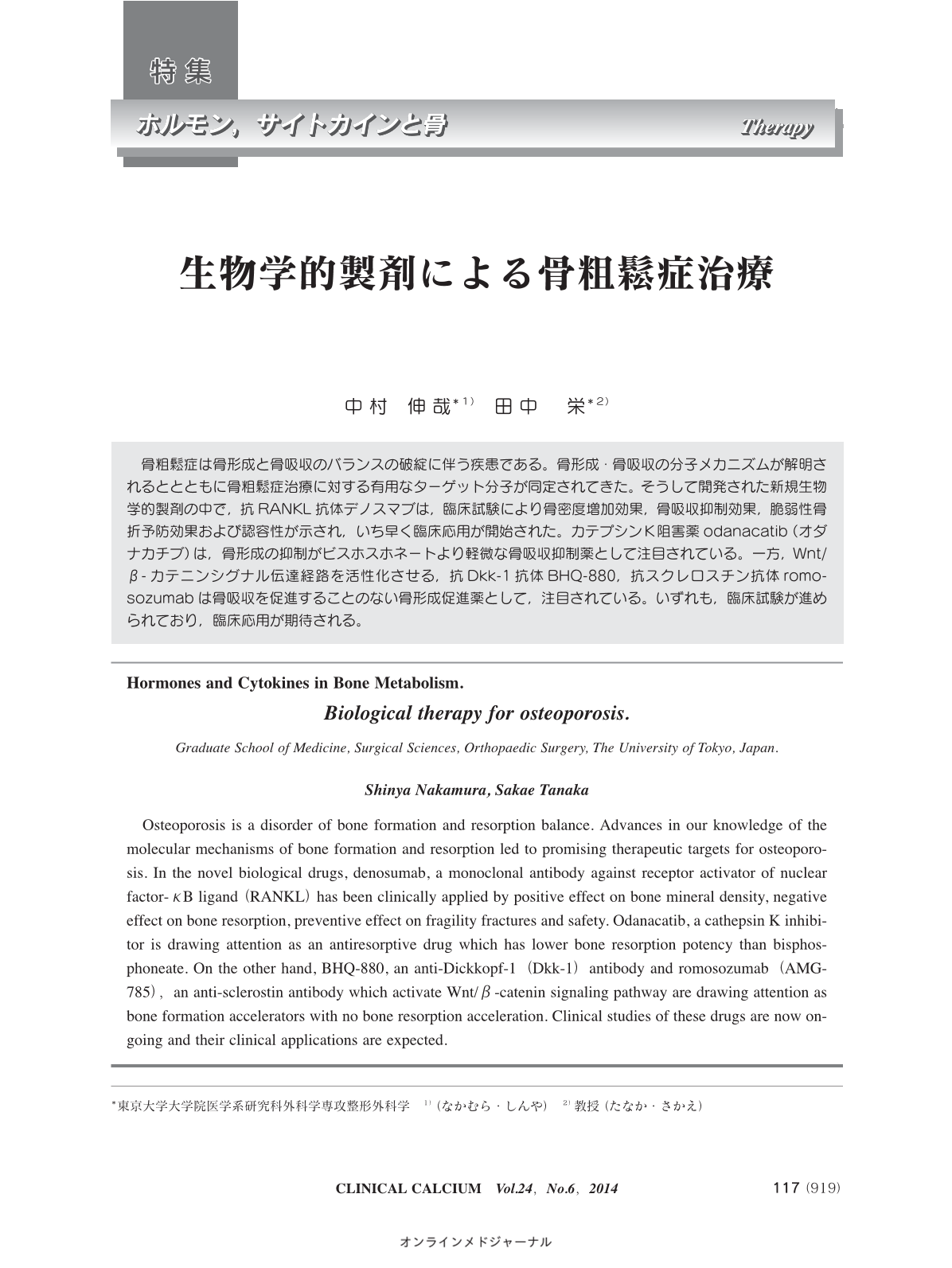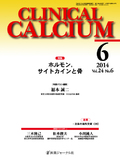Japanese
English
- 有料閲覧
- Abstract 文献概要
- 1ページ目 Look Inside
- 参考文献 Reference
骨粗鬆症は骨形成と骨吸収のバランスの破綻に伴う疾患である。骨形成・骨吸収の分子メカニズムが解明されるととともに骨粗鬆症治療に対する有用なターゲット分子が同定されてきた。そうして開発された新規生物学的製剤の中で,抗RANKL抗体デノスマブは,臨床試験により骨密度増加効果,骨吸収抑制効果,脆弱性骨折予防効果および認容性が示され,いち早く臨床応用が開始された。カテプシンK阻害薬odanacatib(オダナカチブ)は,骨形成の抑制がビスホスホネートより軽微な骨吸収抑制薬として注目されている。一方,Wnt/β-カテニンシグナル伝達経路を活性化させる,抗Dkk-1抗体BHQ-880,抗スクレロスチン抗体romosozumabは骨吸収を促進することのない骨形成促進薬として,注目されている。いずれも,臨床試験が進められており,臨床応用が期待される。
Osteoporosis is a disorder of bone formation and resorption balance. Advances in our knowledge of the molecular mechanisms of bone formation and resorption led to promising therapeutic targets for osteoporosis. In the novel biological drugs, denosumab, a monoclonal antibody against receptor activator of nuclear factor-κB ligand(RANKL)has been clinically applied by positive effect on bone mineral density, negative effect on bone resorption, preventive effect on fragility fractures and safety. Odanacatib, a cathepsin K inhibitor is drawing attention as an antiresorptive drug which has lower bone resorption potency than bisphosphoneate. On the other hand, BHQ-880, an anti-Dickkopf-1(Dkk-1)antibody and romosozumab(AMG-785),an anti-sclerostin antibody which activate Wnt/β-catenin signaling pathway are drawing attention as bone formation accelerators with no bone resorption acceleration. Clinical studies of these drugs are now ongoing and their clinical applications are expected.



